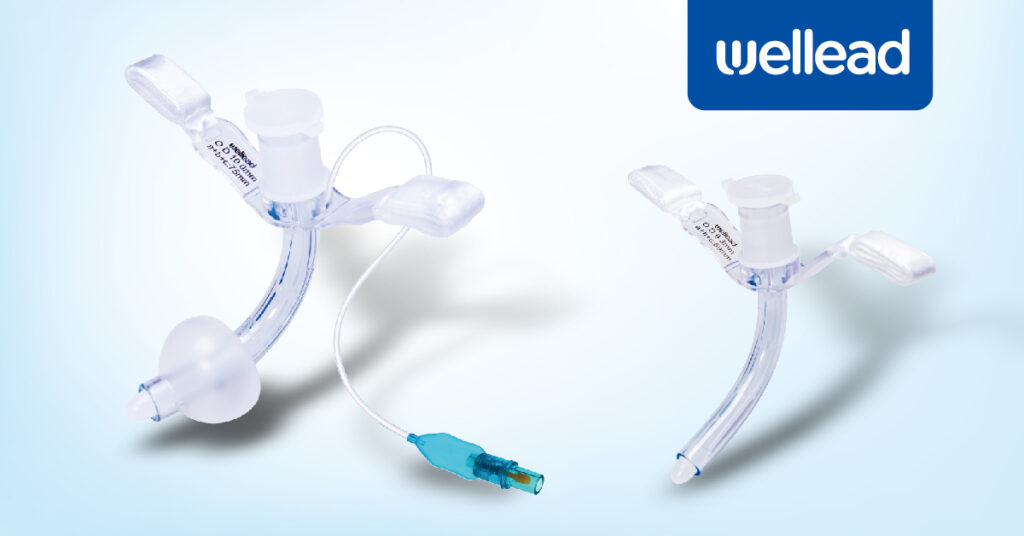Tracheostomy is a surgical procedure. It involves making an opening in the trachea to facilitate respiration.
This is a significant advancement in modern surgical procedures, performed to treat an obstruction in the upper airways by inserting a tube. The artificial airway passage can be closed when no longer needed. In rare cases, a permanent tracheostomy is also performed depending upon the individual situation.
Keep reading to learn what is tracheostomy, the procedure performed for tracheostomy, and its advantages over intubation. A few care tips for tracheostomy are also shared at the end of the article.

What is Tracheostomy?
Tracheostomy is the procedure of a medical incision made by a surgeon. This incision is made through the neck to the trachea. This gap or an opening is called a stoma in medical terms. A hollow tracheostomy tube is passed through the stoma to remove secretions and create an alternate breathing passage for the patient.
Who Needs Tracheostomy and Why?
People with the following conditions may need tracheostomy:
- Those with obstructed upper airway, i.e., mouth, nose, throat.
- Have difficulty swallowing.
- Severe lung disease with impaired gas exchange.
- Frequent shortness of breath.
- Prolonged need for mechanical ventilation.
The reasons tracheostomy is performed are:
- To relieve trouble breathing for short or extended periods.
- To treat medical conditions blocking the airway, such as throat cancer.
- For helping the patient with a major neck or head surgery.
- After a traumatic accident to clear passage for the airway.
What is the Key Device for Tracheostomy?
The key device used in the tracheostomy procedure is a tube-like structure. In medical terms, it is called a tracheostomy tube. Understanding what is a tracheostomy tube and the manner of its operation is relevant to understanding the procedure and risks involved in tracheostomy.
A tracheostomy tube is a medical hollow catheter with easy usage. It is passed inside the trachea through an incision made in the neck. Medical-grade material is used in making tracheostomy tubes to aid the respiratory system. If the insertion is successful, the patient will use this artificial airway for breathing. Breathing through the nose or mouth may be temporarily or permanently halted.
These tubes are the most essential component of the surgical procedure. Understanding their types, usage, and risks is crucial for users and medical professionals. It is important to use tubes from trusted suppliers, such as tracheostomy tubes from Well Lead Medical, given their critical contribution to the respiratory system of the patient.
Cuffed and Uncuffed Tracheostomy Tube:
Following two major types of tracheostomy tubes, also supplied by Well Lead Medical, are most commonly used:
- Cuffed Tracheostomy Tube: The tube comes with cuffs that can be used to block the airway completely. Ensures that air only passes through the tube. This is particularly important in situations where precise control of ventilation is necessary.
- Uncuffed Tracheostomy Tube: Another most commonly used tube lacks an inflatable cuff (balloon-like feature) at the end. Suppose the patient does not require monitoring and measurement of the air in the ventilator and can tolerate the deflation of the cuff without respiratory distress. In that case, a cuffless tracheostomy tube can be considered. Pediatric and neonatal patients typically use uncuffed tracheostomy tubes to avert mucosal injury. Patients in the weaning and recovery phases may also opt for uncuffed tracheostomy tubes.
Advantages of Tracheostomy Tubes:
Selecting the right tracheostomy tube is crucial for good tracheostomy care and recovery. The tracheostomy tubes supplied by Well Lead Medical are highly recommended by medical professionals and tracheostomy tube users. Some notable benefits of these tubes are:
- Highly comfortable.
- Lightweight and made of medical grade PVC.
- ISO standard connector for universal connection and straps for tube fixation.
- Full-length Radio-opaque line and printed neck plate with size information for easy use.
- Maximum protection with rigid blister pack.
Procedure of Tracheostomy
After understanding what is tracheostomy? The procedure of tracheostomy is briefly explained as:
1. Starting with preparing equipment for the surgical procedure and properly sterilizing it.
2. The patient is supplied with a stable oxygen supply to assist during the procedure.
3. Then, general or local anesthesia is administered to the patient before starting the operation.
4. An incision to create a stoma is carefully made on the neck by the surgeon.
5. The incision will also cut through the trachea and be opened wide enough for insertion of the tube.
6. The tracheostomy tube is carefully applied through the neck to the trachea.
7. The tube is secured in place by sutures, tapes, or a band.
8. Lastly, the patient is closely observed during recovery before being discharged.
Postoperative and Recovery
Healing time differs from person to person. On average, the stoma may take about two weeks to recover. Patients work on reviving their oral communication after the operation.
The most important step in tracheostomy care is cleaning the tube. Medical professionals will instruct you on how to clean and care for your tracheostomy tube before discharge. Please follow the guidance and recommended frequency for cleaning.
Conclusion
Tracheostomy is a daunting but also necessary procedure for many. Every surgical procedure comes with some risks that can be limited with proper care and rest. Using a premium-grade tube and following care tips eliminates the chances of infections.
Distinctive features of tracheostomy tubes from Well Lead Medical make them highly sought after in the market. The safe, lightweight tube provides comfort, and its smooth rounded tip reduces trauma during insertion. Using tested and recommended products of Well Lead Medical is more intelligent than trying unreliable suppliers.

